1. Helsinki
2. Sarajevo
Two cities so far: Helsinki and Sarajevo. Next 5 cities to come: Athens, Belgrade, Chisinau, Berlin, and Seville. Watch this space. Want me to talk about your city? Let me know.
1. Helsinki, Finland
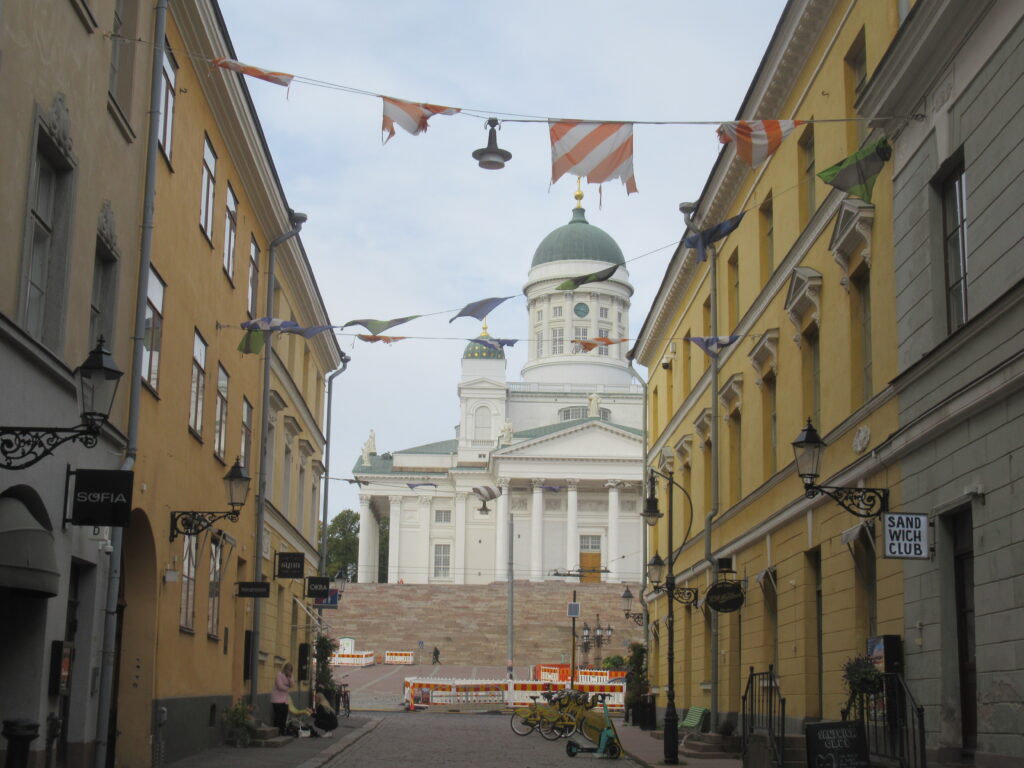
Facts (source)
| Population | 658,457 (city); 1,536,139 (region) |
| Population density | 3,034/km2 (city) |
| Walking share | 46% of all trips |
| Passenger cars | 221,253 (0.34 per person) |
| Paulo’s Walk Score (1-10) | 8 |
Finland must be a great country. Only great countries could have produced the industrial metal hyperpop perfection of Käärijä’s Cha-Cha-Cha. Finland is also officially the happiest country on Earth. And it’s a serious candidate to the prize of country with best pedestrian infastructure. One could even write an academic paper testing if these two facts are statistically related. I bet that they are.
Helsinki has many nice places to walk. It has many quiet neighbourhoods, even in the centre. It has a beach, which is something not many people would associate with Helsinki. There were even people sunbathing when I first went there in September 2014. No, really. It also has large green areas around Toolo Bay.
My favourite neighbouhood is Käpylä, a leafy area where main roads are mostly dominated by trees and trams, rather than cars, and side streets are dominated by trees and children playing. It must be safe too because children walk on their own (as in the rest of Finland), which is an unheard-of thing in most of the rest of the world. Käpylä is far from the centre, but it’s great place to visit and it seems like a great place to live.
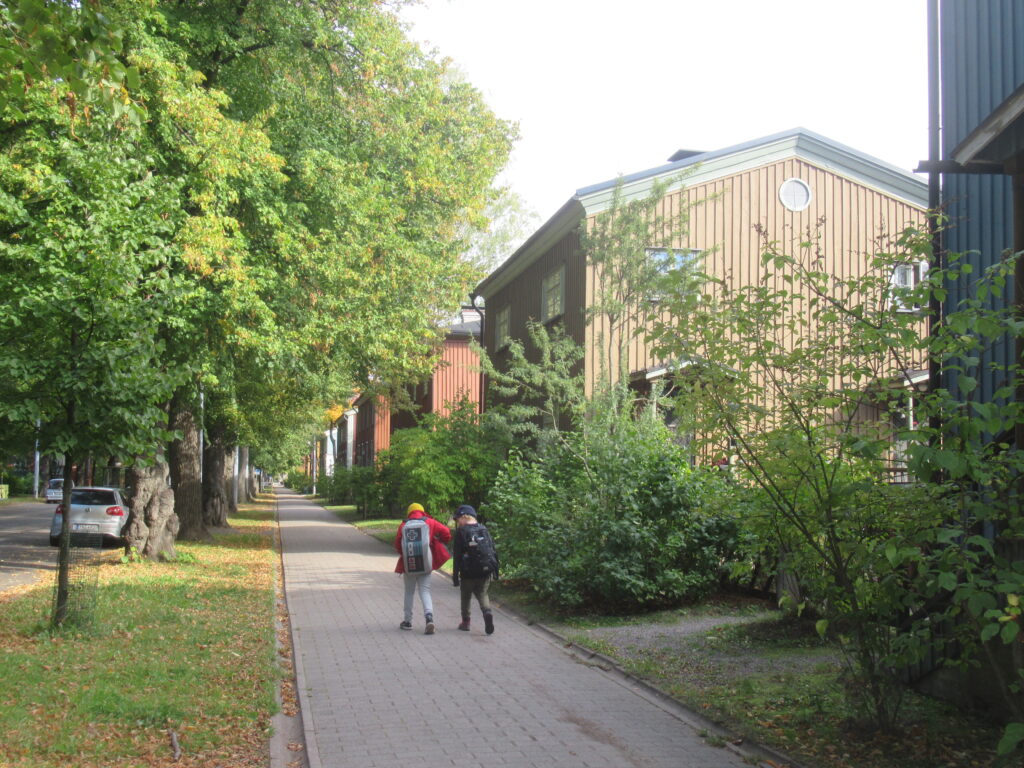
More central areas of Helsinki also have great spaces exclusive to active travel. The greenway in the photo below is completely separated from car traffic (and has benches, not visible in the photo). Post-Covid, as in many other cities, some car parking spaces in central Helsinki were converted to outdoor cafés, but here they are tightly covered (because of the cold weather).


And that is one of the downsides of walking in Helsinki. It’s cold, starting from September.
Also, even if the pedestrian infrastructure is good, some people may feel uneasy to walk in some places at some times in Helsinki. For example, in the city centre, the combination of trams, bicycles, and e-scooters can be dangerous for pedestrians. And in less central places there are few pedestrians (or even cars) around, which may be intimidating, especially in the long, dark, Winter nights.
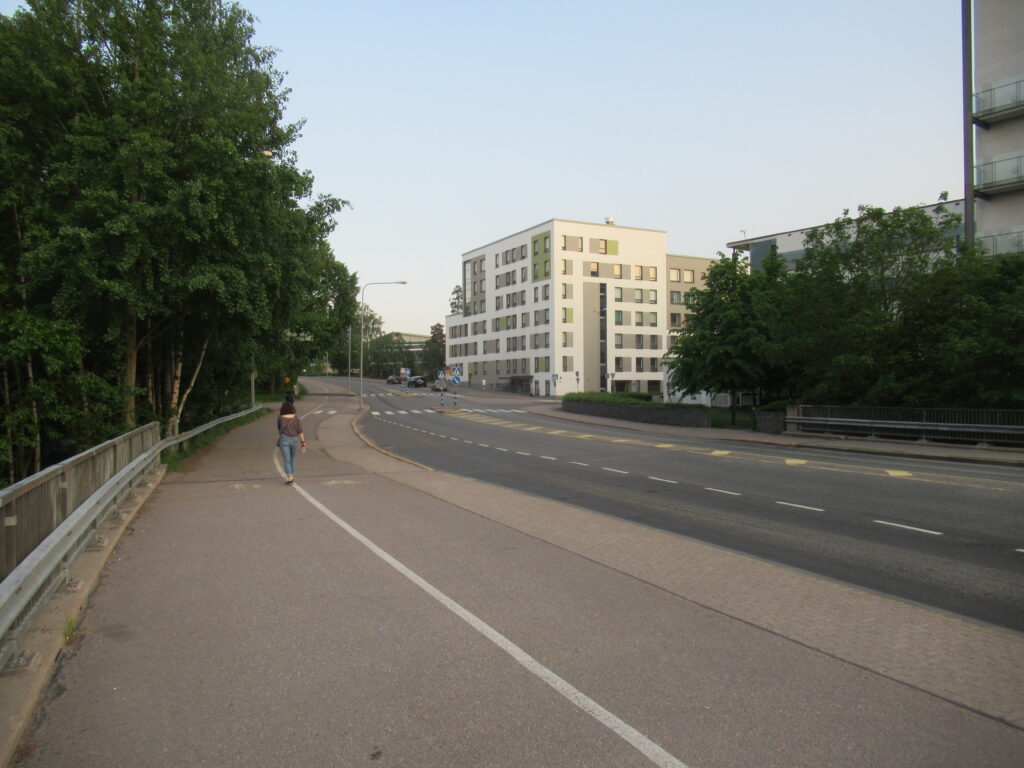
Despite these minor problems, overall, Helsinki is a great place to walk. Given the priorities of local authorities to improve conditions for pedestrians and to plan for wellbeing, this will only get better.
Fly to Asia, Africa, North America, Latin America, or Oceania
Back to Walk Around the World main page
2. Sarajevo, Bosnia and Herzegovina

Facts
| Population | 345,549 (2023 est.) |
| Population density | 2,442/km2 |
| Walking share | Unknown |
| Passenger cars | 162,560 (0.47) (source) |
| Paulo’s Walk Score | 5 |
Sarajevo is great and Miss Sarajevo is one of the best U2 songs ever. But I did not have a great first impression of the city. It is segmented by a very long, very wide, boulevard, with many lanes of non-stopping noisy traffic. Once this boulevard reaches the centre, it splits in two less wide but still very noisy and polluted roads, which engulf the city centre. Although there is a river crossing the centre, walking along the North Bank is not pleasant because of noise and pollution from one of those roads. There is a nice and quite large pedestrianized area in the centre, it’s true. But this walkable area has clear borders on those roads.
Beyond the city centre, the city is made up of hills, with many stairs and narrow alleys. Going up and down the hill can be tiring in the summer and dangerous in the winter because of ice. This can be a problem for older people who those with mobility restrictions.

Most neighbourhoods on the hills feel almost rural. Which means paved roads where pedestrians are the main element. But once in a while a car comes and the driver may not see you because of the many curves. In some neighbourhoods, the area around the shops also tends to be full of cars on weekends, parked everywhere, including footways.

On the positive side, walking in Sarajevo feels quite safe as there are always people around, especially in the Summer. But not in the crumbling Olympic Park, on the hill. It feels very isolated and the derelict infrastructure does not help. The internet is full of stories of people being mugged, or worse, there. This area can be reached by cable car but for those who prefer challenges, walking is also possible. But it’s difficult because the signage is poor. I made the “seemed-like-a-good-idea-at-the-time” mistake of going back to the city by walking but I lost my way and I ended up using rather unsafe paths which do no seem to be used by anyone and were in poor conditions after the rain.
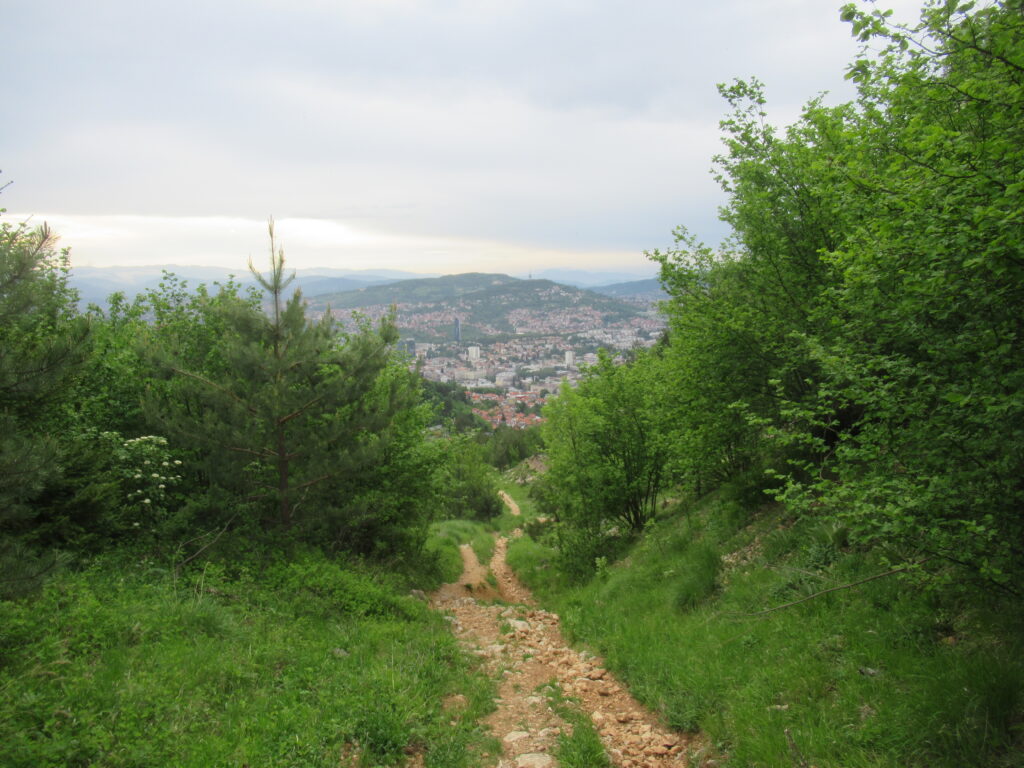
On the other hand, I had a great time walking to the airport, 12km. One is not supposed to walk from/to airports, unless their name is Will Self. But I also do it sometimes. A good part of the route from the city centre to Sarajevo airport is along the big boulevard, which, despite the noise, has excellent walking (and cycling) conditions, and is along the river, as seen below. The rest is quiet communist-era tower block areas, with many people around, and benches next to buildings. The only tough part is the final one: crossing the road to the airport. Not recommended.
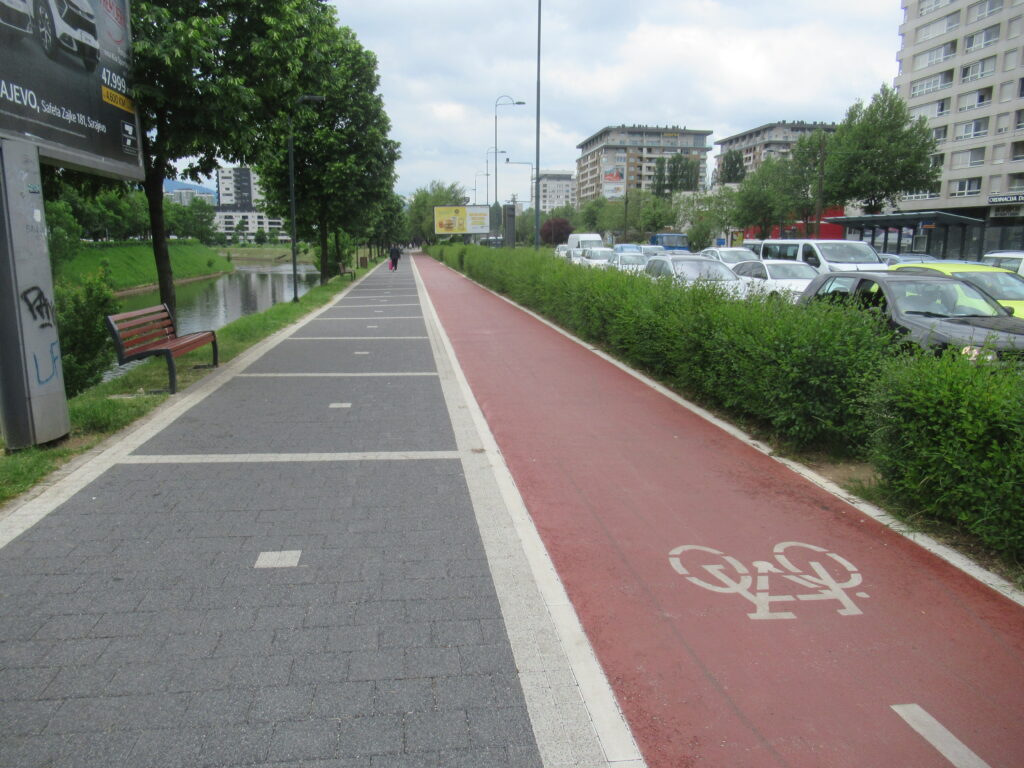
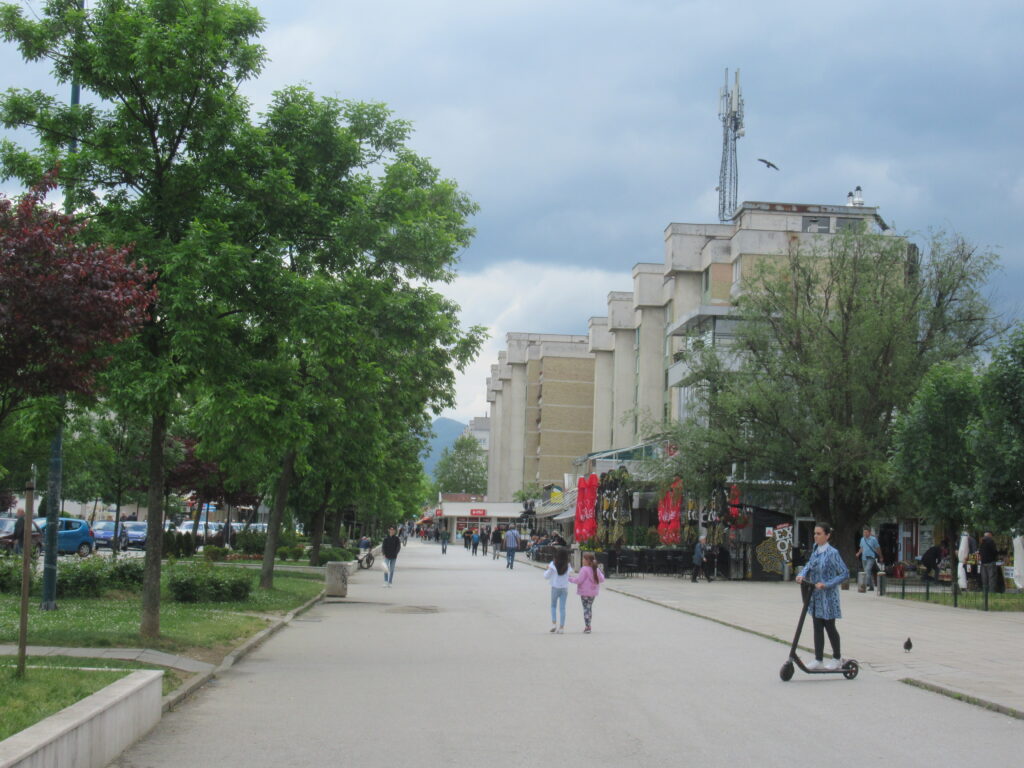
Conclusion: not very good but also not bad. I was happy with walking in Sarajevo, but I recognize that going up and down hills, or walking along and across roads full of traffic can be a barrier to some people.
Fly to Asia, Africa, North America, Latin America, or Oceania